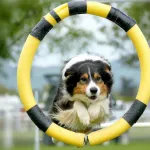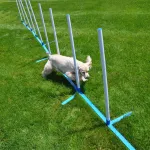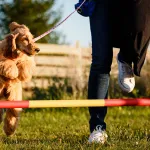Training tips
Training Reinforcement: The Key to Effective Dog Training

Whether you are working on basic commands, behavioral corrections, or advanced skills, training reinforcement plays a crucial role in shaping your dog's behavior. Reinforcement strengthens learning, ensuring that your furry friend understands and retains training commands effectively.
Training your dog is an ongoing process that requires consistency, patience, and the right techniques. Whether you are working on basic commands, behavioral corrections, or advanced skills, training reinforcement plays a crucial role in shaping your dog's behavior. Reinforcement strengthens learning, ensuring that your furry friend understands and retains training commands effectively. In this comprehensive guide, we will explore the importance of training reinforcement, different reinforcement techniques, and how Calidognia can assist you in achieving your dog training goals.
Understanding Training Reinforcement in Dog Training
Training reinforcement is a technique used to encourage and strengthen desired behaviors in dogs. It involves rewarding a dog when they exhibit the correct behavior, thereby increasing the likelihood that they will repeat it. Reinforcement can be positive (reward-based) or negative (removal of an unpleasant stimulus), but the goal remains the same: to enhance learning and obedience.
For pet owners who are serious about effective dog training, reinforcement should be an integral part of their training routine. Without proper reinforcement, dogs may struggle to grasp commands, leading to frustration for both the owner and the pet.
Types of Training Reinforcement
1. Positive Reinforcement
Positive reinforcement is the most effective and humane method of dog training. It involves rewarding your dog with treats, praise, toys, or affection whenever they exhibit the desired behavior. This method not only strengthens learning but also builds a strong bond between the owner and the pet.
Examples of positive reinforcement:
- Giving a treat when your dog sits on command
- Praising your dog for coming when called
- Providing playtime after successfully following a command
2. Negative Reinforcement
Negative reinforcement involves removing an unpleasant stimulus when the dog exhibits the correct behavior. Unlike punishment, which discourages behavior, negative reinforcement encourages desired actions by eliminating discomfort.
For example:
- Releasing pressure on a leash when the dog stops pulling
- Stopping a loud noise when the dog obeys a command
3. Variable Reinforcement Schedule
Once a dog has learned a command, switching to a variable reinforcement schedule can enhance learning. Instead of rewarding every correct response, rewards are given intermittently. This method strengthens the behavior and ensures long-term retention.
For example:
- Sometimes giving a treat when the dog obeys but not every time
- Offering verbal praise occasionally instead of always using treats
The Role of Pet Sitting in Training Reinforcement
For pet owners with busy schedules, pet sitting services can be a valuable resource. Professional pet sitters can continue training reinforcement in your absence, ensuring consistency in your dog's learning. At Calidognia, our pet sitters are trained to reinforce good behavior, providing structured sessions that complement your dog's regular training routine.
Benefits of using pet sitting for training reinforcement:
- Maintains consistency in training while you're away
- Reduces stress and anxiety in dogs by providing familiar routines
- Ensures that bad habits do not develop in your absence
Common Mistakes to Avoid in Training Reinforcement
- Inconsistent Reinforcement: Rewarding a behavior sometimes and ignoring it at other times confuses the dog and slows down learning.
- Using Punishment Instead of Reinforcement: Punishment-based training can create fear and anxiety, leading to behavioral issues.
- Reinforcing the Wrong Behavior: Accidentally rewarding negative behavior, such as giving attention when a dog jumps on people, can reinforce unwanted actions.
- Overusing Treats: While treats are effective, excessive use can lead to dependence on food rewards.
- Ignoring Individual Learning Styles: Every dog is different, and some may respond better to verbal praise, while others prefer toys or affection.
How Calidognia Can Help with Dog Training and Training Reinforcement
At Calidognia, we specialize in providing top-quality dog training services tailored to your pet's unique needs. Our experienced trainers use training reinforcement techniques that are effective, humane, and backed by behavioral science. Whether you need help with basic obedience, advanced commands, or behavior modification, our team is here to support you every step of the way.
Why Choose Calidognia?
- Experienced Trainers: Our trainers have extensive experience in positive reinforcement-based training.
- Customized Training Plans: We tailor our training sessions to meet the individual needs of your dog.
- Pet Sitting Services: Our trained pet sitters ensure continuity in training even when you're away.
- Flexible Scheduling: We offer convenient training schedules to fit your busy lifestyle.
Training reinforcement is the key to successful and long-lasting dog training. Whether you are working on basic commands or advanced skills, consistency in reinforcement can make all the difference. By incorporating positive reinforcement techniques, utilizing professional pet sitting services, and avoiding common training mistakes, you can set your dog up for success.
At Calidognia, we are committed to helping you achieve the best results in your dog's training journey. Contact us today to learn more about our expert training and pet sitting services.




